Types Of Nerium Oleander Varieties (Kaner Plants & Trees)
From multiple varieties and cultivars of oleander available, the most common ones are Hardy Pink Oleander, Mrs. Lucille Hutchings, Petite Salmon Oleander, and Calypso, etc.
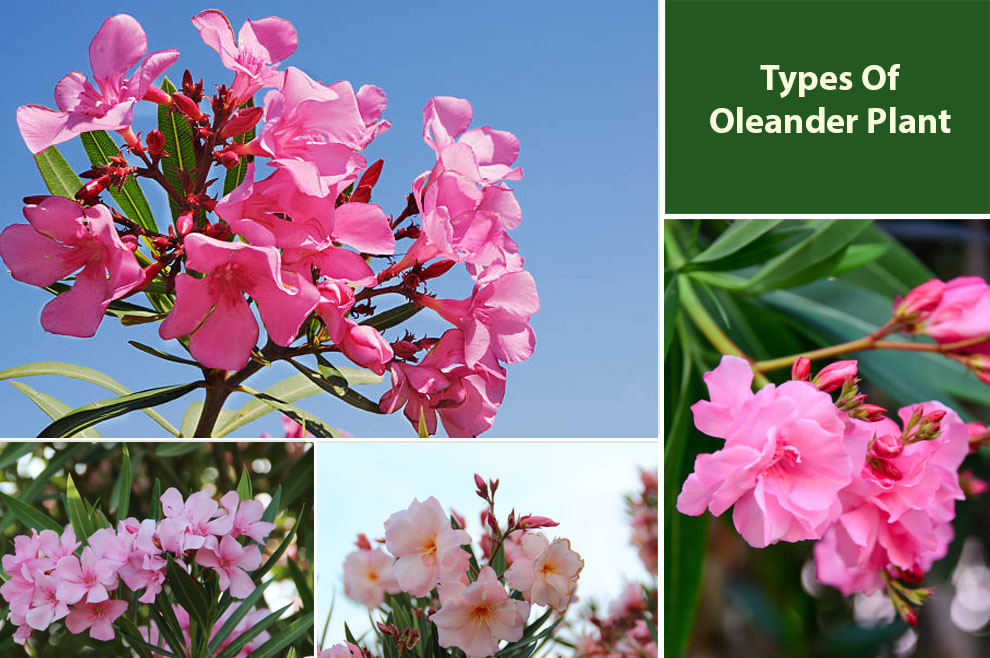
Originally native to the Mediterranean region, oleander trees are now widely grown throughout the world. The trees grow 8–15 feet tall and have long, leathery, deep-green leaves.
Any garden would be enhanced by the blooms of oleander trees in summer. They produce clusters of fragrant, white, pink, or red flowers.
Presently, there are many cultivars and true oleander varieties that you can choose from to brighten up your garden. Some of the most popular varieties of oleanders that are commonly planted in gardens are Hardy Pink, Sister Agnes, Calypso, Dwarf Red, White Sands, Isle of Capri, and Petite Salmon.
Different Types of Oleander Plants and Trees
- Hardy Pink Oleander
- Sister Agnes Oleander
- Petite Salmon Oleander
- Dwarf Red Oleander
- Isle of Capri Oleander
- Hawaii Oleander
- Lucille Hutchings
- White Sands Oleander
- Calypso Oleanders
Let us now read about the popular Oleander types in detail that can enhance your landscape with minimal efforts:
A. Hardy Pink Oleander
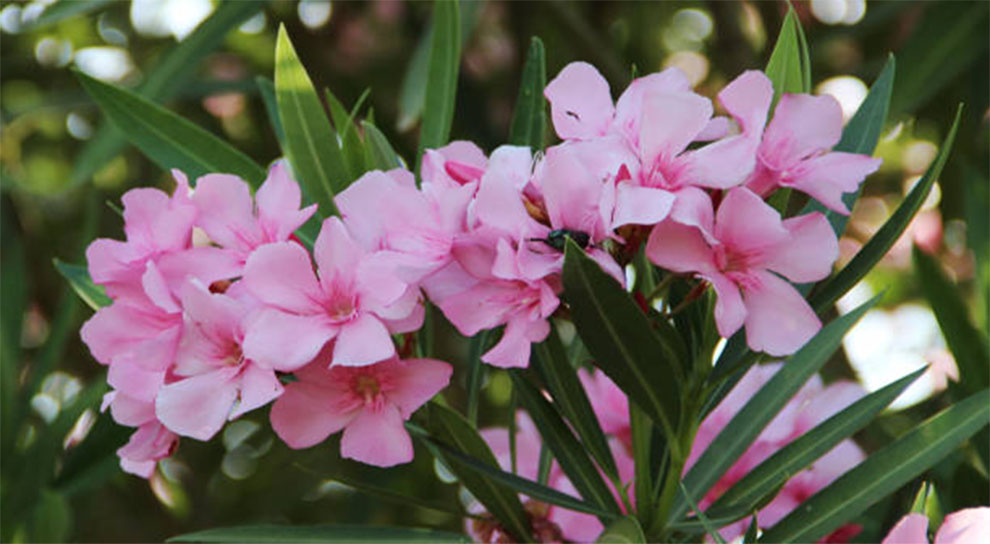
| Size | 14 feet high, 10 feet wide |
| Flower color | Pink |
The Hardy Pink Oleander is a deciduous shrub or tree native to the Mediterranean region. It is a fast-growing, hardy shrub with a beautiful pink flower.
The flowers of these types of Kaner plants can reach up to five inches in diameter and bloom in the late spring and summer.
The leaves are dark green and glossy, and the bark is gray. The Hardy Pink Oleander is a great choice for a small garden or patio, as it is easy to care for and provides a burst of color for any outdoor space.
B. Sister Agnes Oleander
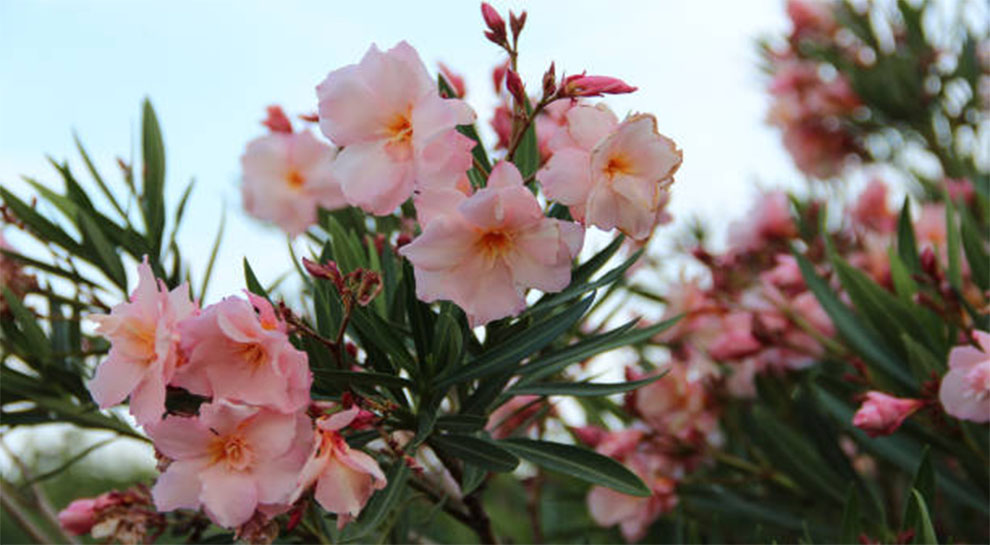
| Size | 20 feet high, 12 feet wide. |
| Flower color | White, pink, red, or yellow. |
Sister Agnes oleander is one of the types of oleander trees which is a species of flowering shrub native to Mediterranean countries. It is an evergreen shrub or small tree, growing to a height of up to 20 ft. The leaves are dark green, narrow lanceolate in shape, and approximately 4 inches long.
The clusters of fragrant flowers are white, pink, red, or yellow, and occur in late spring and summer. The fruit is a long, narrow capsule containing several seeds.
The plant is toxic and all parts of the plant are poisonous if ingested. However, it is widely planted as an ornamental plant in gardens, parks, and roadsides.
C. Petite Salmon Oleander
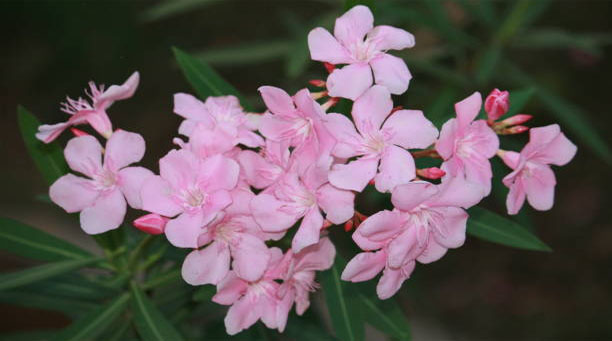
| Size | 3-6 feet high and wide |
| Flower color | Salmon-pink |
Salmon oleander is an ornamental shrub that has salmon-pink flowers and dark green leaves. It is a drought-tolerant shrub that is low maintenance and easy to care for.
It grows best in full sun to partial shade and prefers dry, well-drained soil. It can reach up to 6 feet in height and can be pruned to keep it smaller.
Salmon oleander is a great choice for borders, foundation plantings, or landscape accent plants.
D. Dwarf Red Oleander
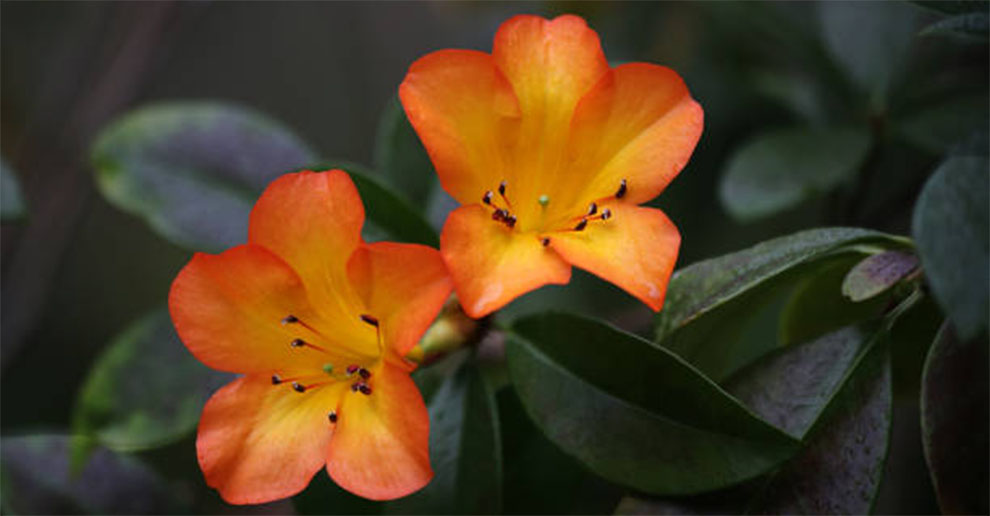
| Size | 3-6 feet high and wide |
| Flower color | Yellow and orange |
Dwarf red oleander which belongs to one of the Nerium Oleander varieties is a small, perennial bush native to Mexico and Central America.
It is an evergreen shrub that can grow to about 3-6 feet tall and wide, with oval leaves and clusters of yellow and orange flowers.
The plant is often used as an ornamental plant in gardens, as it is low maintenance and produces a stunning display of blooms when in season. It is also sometimes used as a hedge or screen plant.
E. Isle of Capri Oleander
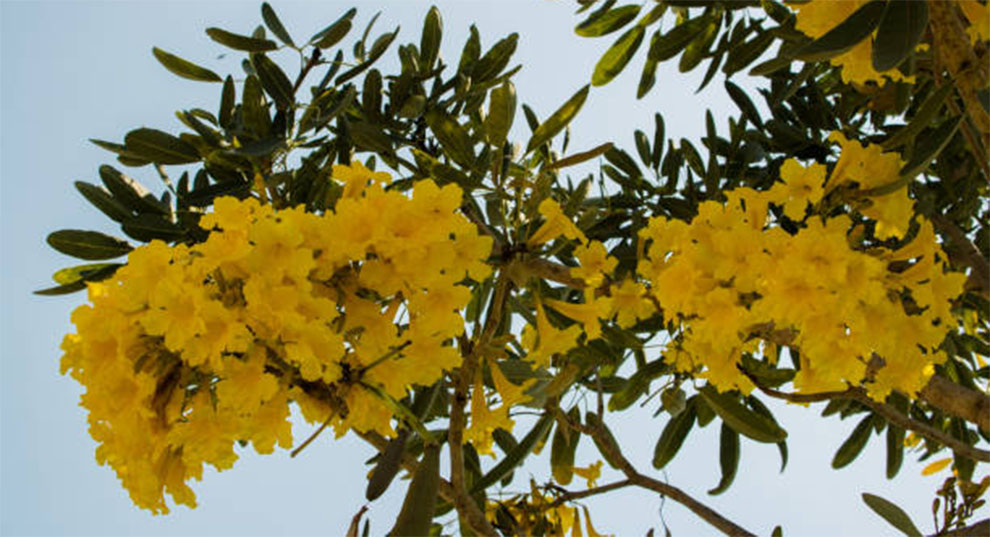
| Size | 9 to 15 feet high and wide |
| Flower color | Light yellow |
The flowers on the Isle of Capri oleander are solitary and light yellow in color. It is a multi-branched Oleander plant, which is sometimes trained into an appealing little tree, and also works well as a fast-growing screen or large specimen planting.
A row of Oleander planted on five to seven-foot centers offers a great screen for a large dwelling or other large-scale landscape.
F. Hawaii Oleander
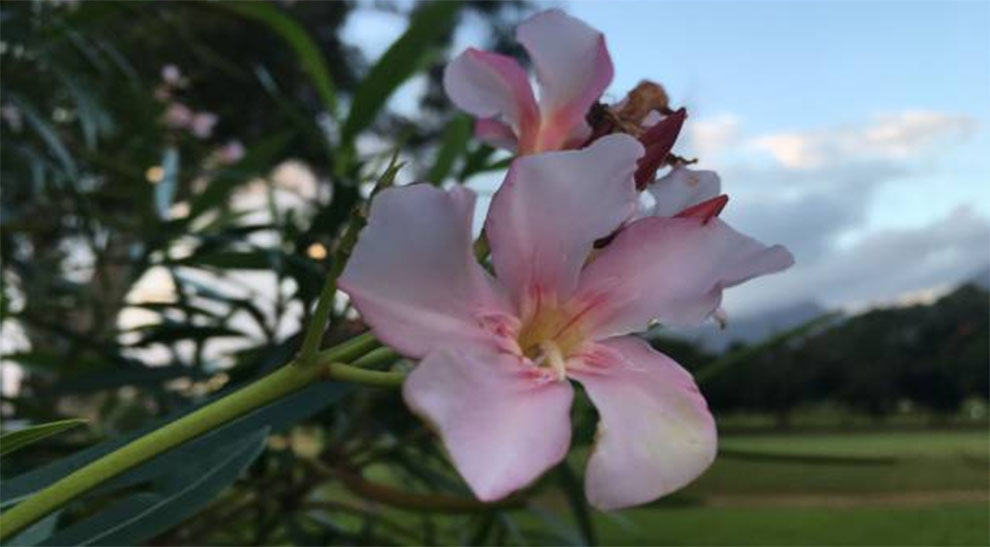
| Size | 6-20 feet high, 10 feet wide |
| Flower color | White and pink |
The Hawaii types of oleander trees are evergreen plants native to the Hawaiian Islands. It is an excellent choice for a flowering shrub for a tropical landscape.
It is easy to grow and maintain. It blooms with fragrant, pink-to-white flowers year-round. This species is hardy and can tolerate full sun, partial shade, and drought. However, it should be protected from frost and extreme temperatures.
G. Lucille Hutchings
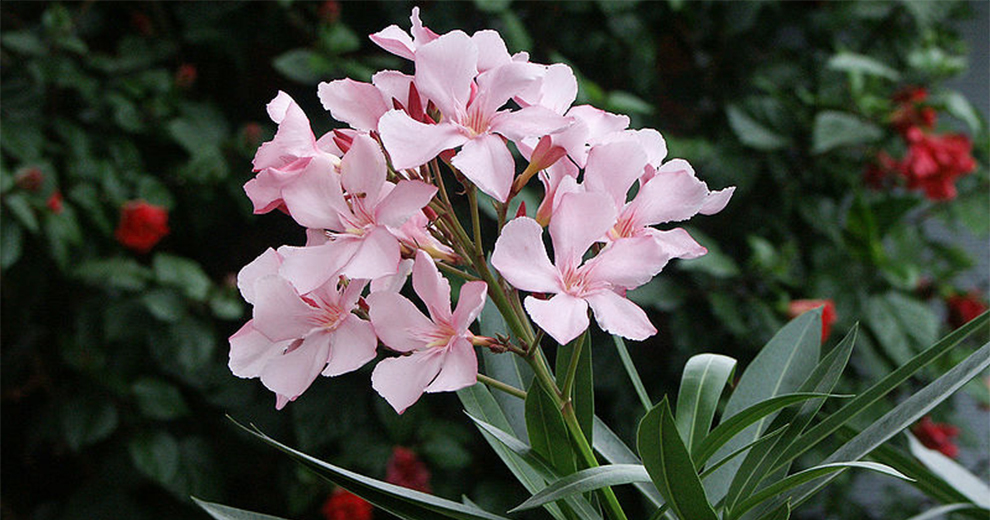
| Size | 3-9 feet high and wide |
| Flower color | Salmon pink with dark pink edges. |
Mrs. Lucille Hutchings is a type of oleander tree that produces double flowers and is one of the most famous Nerium oleander varieties.
The blossoms are light salmon pink in color with dark pink edges. The flowers are considerably large in size and the plant usually grows in the form of large shrubs.
They are extremely easy to grow and care for. This oleander variety can tolerate full sunlight or partial shade along with some amount of drought.
H. White Sands Oleander
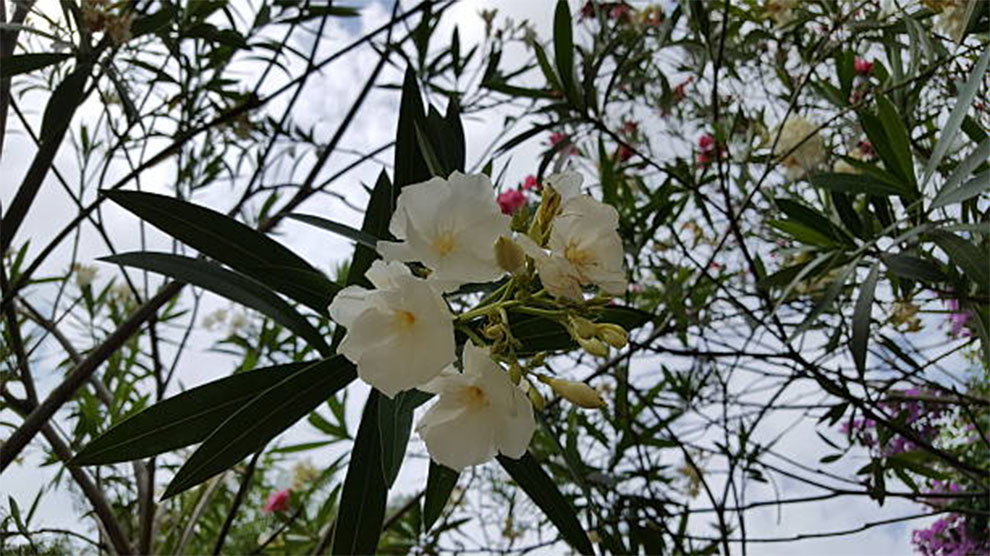
| Size | 13-19 feet high, 10 feet wide. |
| Flower color | White |
The white sands oleander species is an evergreen shrub native to Mexico, Central America, South America, and the Caribbean. It has a wide range of growth habits, from full-sun to part-sun.
It can grow as tall as 19 feet and up to 8-10 feet wide. The white sand oleander is known for its white, star-shaped flowers and its deep green, glossy foliage. It is a popular choice for landscaping due to its drought tolerance and attractive appearance.
The white sand oleander can grow in both sandy and clayey soils; however, it prefers well-drained soils.
It is also salt tolerant, making it a great choice for coastal gardens. It is not recommended for planting in containers as it does not tolerate wet soil or root rot.
The white sand oleander also has a high tolerance for heat and humidity, making it an ideal choice for hot, humid climates.
I. Calypso Oleanders
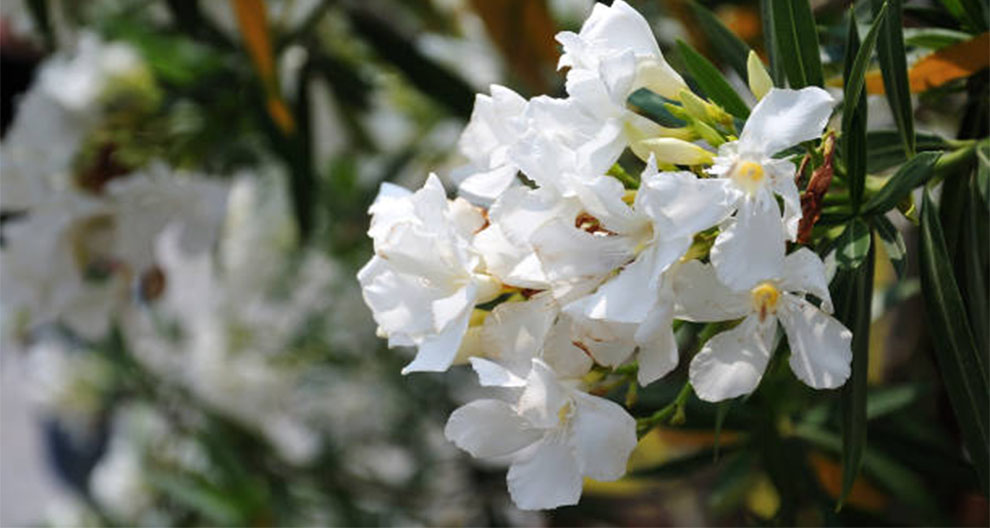
| Size | 11 feet high, 8 feet wide |
| Flower color | White |
Calypso oleander is native to the Mediterranean region. These types of Oleander plants are hardy evergreen shrubs or small trees that can reach a height of 11 feet and a spread of 8 feet.
Calypso oleander has dark green, glossy foliage and fragrant, white flowers. The flowers are clustered and have a yellow center. This variety is drought-tolerant and can thrive in a variety of soil types.
It is also relatively pest- and disease-resistant, making it a popular choice for landscaping. Calypso oleander is best suited for USDA hardiness zones 8-10.
Related: How fast do oleanders grow?
Buying Guide for Oleander Plants
If you are buying an oleander, consider the following points:
1. Consider the Size: Oleander trees come in a range of sizes, from dwarf varieties that reach just a couple of feet tall to larger trees that can reach up to 20 feet. Think carefully about the size of the tree you’re looking for and make sure to measure the area you plan on planting it in before making your purchase.
2. Choose the Right Variety: There are many different oleander varieties available on the market, each one with its own unique characteristics. Some varieties are more resistant to cold temperatures and pests, while others are more drought-tolerant. Consider the climate of your area and make sure to pick a variety suited to it.
3. Consider the Soil: Most Oleander species prefer well-draining, slightly acidic soil. If your soil is very sandy or heavy clay, consider adding some organic matter to help improve the drainage and texture.
4. Purchase Healthy Plants: Make sure to inspect any oleander plant you’re thinking about buying for signs of pests or disease. Healthy plants should have bright green leaves and strong branches.
5. Ask for Advice: If you’re still unsure about which variety to choose or how to care for your oleander tree, don’t hesitate to ask your local nursery or garden center for advice. They will be able to provide you with the information you need to make sure your tree is happy and healthy.
Oleanders and Environment & Wildlife
Oleanders can have both positive and negative impacts on the environment and wildlife. When planted in the right place and in the right amount, oleanders can provide food and shelter for a variety of wildlife, including birds, bees, and other beneficial insects.
Additionally, oleanders can provide a natural barrier to wind and help prevent soil erosion. On the other hand, some oleander varieties can be quite invasive and can crowd out native plants.
If left unchecked, oleanders can take over an area and create a monoculture, which can be harmful to local wildlife. Oleanders also contain toxins that can be dangerous to both humans and animals, so it is important to take caution when handling them.
Finally, oleanders are susceptible to a variety of pests and diseases, so they may require additional treatments to keep them healthy and thriving.
Q. Are oleanders poisonous to touch?
A: Almost all oleander varieties are poisonous to touch. In oleanders, all parts of the plant, including the sap, contain toxic compounds that can cause skin irritation, rashes, and other allergic reactions.
It is important to check with a local nursery or gardening center to determine which varieties are safe to handle.
Q. Which are the non-poisonous oleanders?
A: There are no non-toxic Oleander species as of now. All parts of oleander plants are poisonous. However, there are some other non-toxic plants you could grow instead of oleanders like Arizona Rosewood, Island Bush Poppy, or Lemon Bottlebrush.
Q. Which is the most fragrant oleander?
A: The most fragrant oleander is the double-flowered, pink oleander. Some of the other aromatic oleander varieties include ‘Provence’, ‘Petite Pink’, ‘Dwarf Snowdrift’, ‘Calypso’, ‘Tahiti’, ‘Blushing Bride’, and ‘Minerva’.
Q. What is the hardiest oleander?
A: The hardiest and sturdiest oleander tree is the Hardy Pink oleander. This variety is known for its resilience and ability to withstand extreme weather conditions and is one of the most popular oleanders available.
Q. How many colors of oleanders are there?
A: There are many different types of oleanders, and they come in a variety of colors including all shades of white, pink, red, orange, yellow, and purple.
Summing up…
Almost all oleander plants are incredibly versatile and colorful, with countless varieties available to suit any garden.
Whether you’re looking for a low-maintenance shrub for a sunny spot, a colorful hedge for a windy area, or a show-stopping tree for a focal point, there’s are multiple types of Kaner plants that are perfect for you.
With its vibrant blooms, hardy nature, and versatility, the Oleander is sure to bring joy and beauty to any garden.
